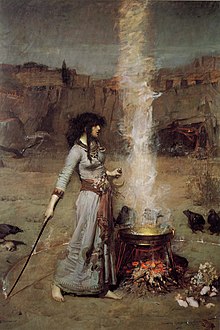High fantasy, or epic fantasy, is a subgenre of fantasy defined by the epic nature of its setting or by the epic stature of its characters, themes, or plot. High fantasy is set in an alternative, fictional ("secondary") world, rather than the "real" or "primary" world. This secondary world is usually internally consistent, but its rules differ from those of the primary world. By contrast, low fantasy is characterized by being set on Earth, the primary or real world, or a rational and familiar fictional world with the inclusion of magical elements.
Magic realism or magical realism is a style or genre of fiction and art that presents a realistic view of the world while incorporating magical elements, often blurring the lines between fantasy and reality. Magic realism often refers to literature in particular, with magical or supernatural phenomena presented in an otherwise real-world or mundane setting, commonly found in novels and dramatic performances. In his article “Magical Realism in Spanish American Literature”, Luis Leal explains the difference between magic literature and magical realism, stating that, “Magical realism is not magic literature either. Its aim, unlike that of magic, is to express emotions, not to evoke them.” Despite including certain magic elements, it is generally considered to be a different genre from fantasy because magical realism uses a substantial amount of realistic detail and employs magical elements to make a point about reality, while fantasy stories are often separated from reality. Magical realism is often seen as an amalgamation of real and magical elements that produces a more inclusive writing form than either literary realism or fantasy.
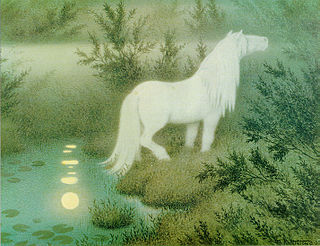
A fantasy world or fictional world is a world created for fictional media, such as literature, film or games. Typical fantasy worlds feature magical abilities. Some worlds may be a parallel world connected to Earth via magical portals or items ; an imaginary universe hidden within ours ; a fictional Earth set in the remote past or future ; an alternative version of our History ; or an entirely independent world set in another part of the universe.

Halflings are a fictional race found in some fantasy works. They tend to be depicted as physically similar to humans, except about half as tall and not as stocky as the similarly sized dwarves. Halflings are often depicted as having slightly pointed ears along with leathery-soled feet which are covered with curly hair. They tend to be portrayed as stealthy and lucky. The term is derived for the word used in Scotland, Northern Ireland, and Northern England for a child who is not yet fully grown. Halflings are found many fantasy novels and games, including as an alternative term for hobbits in J. R. R. Tolkien's Middle-earth and as playable humanoid races in Dungeons & Dragons.
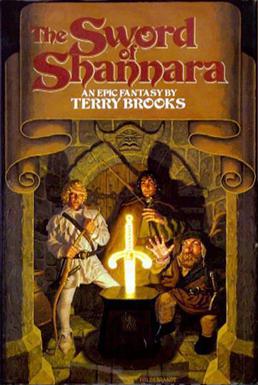
The Sword of Shannara is a 1977 epic fantasy novel by American writer Terry Brooks. It is the first book in a titular trilogy.

Fantasy literature is literature set in an imaginary universe, often but not always without any locations, events, or people from the real world. Magic, the supernatural and magical creatures are common in many of these imaginary worlds. Fantasy literature may be directed at both children and adults.

A fantasy trope is a specific type of literary trope that occurs in fantasy fiction. Worldbuilding, plot, and characterization have many common conventions, many of them having ultimately originated in myth and folklore. J. R. R. Tolkien's legendarium for example, was inspired from a variety of different sources including Germanic, Finnish, Greek, Celtic and Slavic myths. Literary fantasy works operate using these tropes, while others use them in a revisionist manner, making the tropes over for various reasons such as for comic effect, and to create something fresh.
Low fantasy, or intrusion fantasy, is a subgenre of fantasy fiction in which magical events intrude on an otherwise-normal world. The term thus contrasts with high fantasy stories, which take place in fictional worlds that have their own sets of rules and physical laws.

A magic item is any object that has magical powers inherent in it. These may act on their own or be the tools of the person or being whose hands they fall into. Magic items are commonly found in both folklore and modern fantasy. Their fictional appearance is as old as the Iliad in which Aphrodite's magical girdle is used by Hera as a love charm.

Elements of the supernatural and the fantastic were an element of literature from its beginning. The modern genre is distinguished from tales and folklore which contain fantastic elements, first by the acknowledged fictitious nature of the work, and second by the naming of an author. Works in which the marvels were not necessarily believed, or only half-believed, such as the European romances of chivalry and the tales of the Arabian Nights, slowly evolved into works with such traits. Authors like George MacDonald (1824–1905) created the first explicitly fantastic works.

A magic ring is a mythical, folkloric or fictional piece of jewelry, usually a finger ring, that is purported to have supernatural properties or powers. It appears frequently in fantasy and fairy tales. Magic rings are found in the folklore of every country where rings are worn. Some magic rings can endow the wearer with a variety of abilities including invisibility and immortality. Others can grant wishes or spells such as neverending love and happiness. Sometimes, magic rings can be cursed, as in the mythical ring that was recovered by Sigurð from the hoard of the worm Fáfnir in Norse mythology or the fictional ring that features in The Lord of the Rings. More often, however, they are featured as forces for good, or as a neutral tool whose value is dependent upon the wearer.
Worldbuilding is the process of constructing an imaginary world or setting, sometimes associated with a fictional universe. Developing the world with coherent qualities such as a history, geography, culture and ecology is a key task for many science fiction or fantasy writers. Worldbuilding often involves the creation of geography, a backstory, flora, fauna, inhabitants, technology and often if writing speculative fiction, different peoples. This may include social customs as well as invented languages for the world.
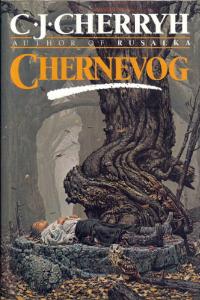
The Russian Stories, also known as the Russian Series, the Russian Trilogy and the Rusalka Trilogy, are a series of fantasy novels by science fiction and fantasy author C. J. Cherryh. The stories are set in medieval Russia along the Dnieper river, in a fictional alternate history of Kievan Rus', a predecessor state of modern-day Russia, Belarus and Ukraine. The three books in the series are Rusalka (1989), Chernevog (1990), and Yvgenie (1991). Rusalka was nominated for a Locus Award in 1990.
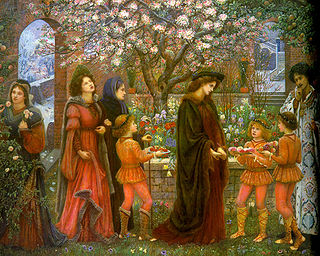
A magician, also known as an archimage, mage, magus, magic-user, spellcaster, enchanter/enchantress, sorcerer/sorceress, warlock, witch, or wizard, is someone who uses or practices magic derived from supernatural, occult, or arcane sources. Magicians enjoy a rich history in mythology, legends, fiction, and folklore, and are common figures in works of fantasy, such as fantasy literature and role-playing games.
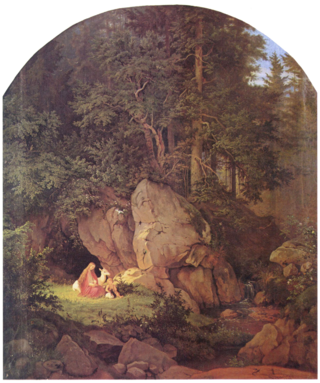
In folklore and fantasy, an enchanted forest is a forest under, or containing, enchantments. Such forests are described in the oldest folklore from regions where forests are common, and occur throughout the centuries to modern works of fantasy. They represent places unknown to the characters, and situations of liminality and transformation. The forest can feature as a place of threatening danger, or one of refuge, or a chance at adventure.
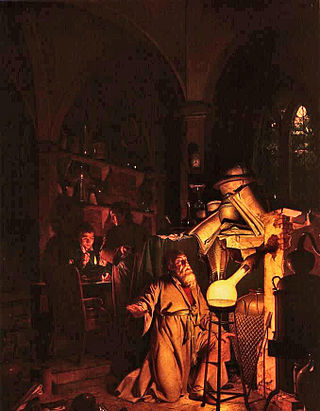
Elements of the supernatural and the fantastic were an element of literature from its beginning, though the idea of a distinct genre, in the modern sense, is less than two centuries old.

Fiction is any creative work, chiefly any narrative work, portraying individuals, events, or places that are imaginary or in ways that are imaginary. Fictional portrayals are thus inconsistent with history, fact, or plausibility. In a traditional narrow sense, "fiction" refers to written narratives in prose – often referring specifically to novels, novellas, and short stories. More broadly, however, fiction encompasses imaginary narratives expressed in any medium, including not just writings but also live theatrical performances, films, television programs, radio dramas, comics, role-playing games, and video games. The publishing industry divides fiction into adult fiction, young adult fiction, new adult fiction, and children's fiction.

Fantasy is a genre of speculative fiction involving magical elements, typically set in a fantasy world and usually inspired by mythology or folklore. The term "fantasy" can also be used to describe a "work of this genre", usually literary.

The following outline is provided as an overview of and topical guide to fantasy:
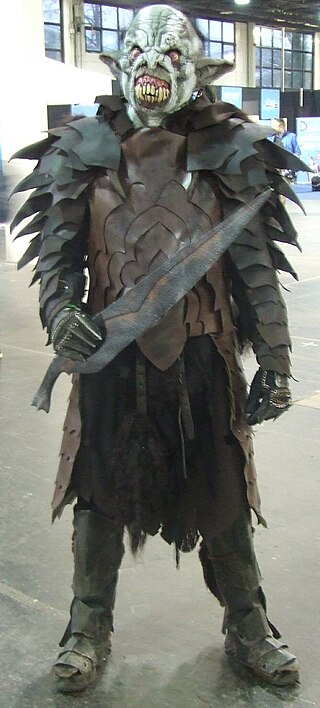
Although fantasy had long existed in various forms around the world before his time, J. R. R. Tolkien has been called the "father of fantasy", and The Lord of the Rings its centre. That novel, published in 1954–5, enormously influenced fantasy writing, establishing in particular the form of high or epic fantasy, set in a secondary or fantasy world in an act of mythopoeia. The book was distinctive at the time for its considerable length, its "epic" feel with a cast of heroic characters, its wide geography, and its battles. It involved an extensive history behind the action, an impression of depth, multiple sentient races and monsters, and powerful talismans. The story is a quest, with multiple subplots. The novel's success demonstrated that the genre was commercially distinct and viable.

